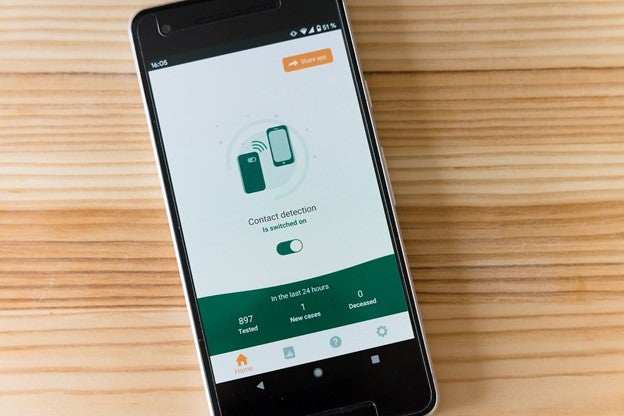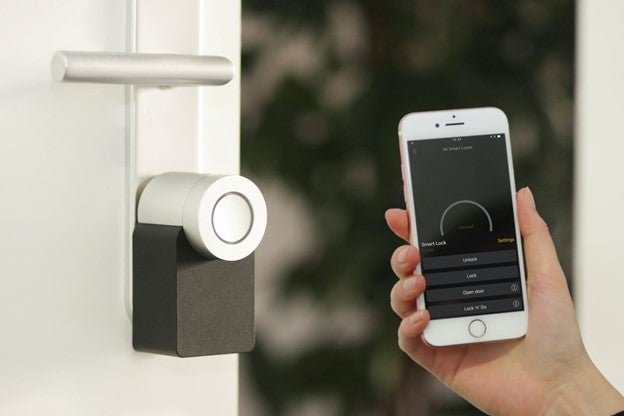Mobile Credentials Are Becoming the Standard for Commercial Door Access
By: SmallBizClub

Since the pandemic, concerns over physical security have prompted over 40% of organizations to make changes to their security strategy. With the increase in worry over virus transmission and physical security, you may also be considering improving your office’s entry and security system.
Read on to learn why you should include mobile credentials in your physical security plan as standard. We talk about the benefits of using mobile credentials for door access, plus how you can use this system as the starting post from which you build your security investments.
 Photo by Markus Winkler on Unsplash
Photo by Markus Winkler on Unsplash
Benefits Of Mobile Credentials for Commercial Door Access Control
Mobile credentials are becoming an increasingly popular way for corporate businesses to manage who is granted and restricted access to their building and the rooms within the office. Essentially, mobile credentials are a keyless door entry solution, allowing you to use your smartphone as your key to access the office. This section will explore the main reason for the increased use of this up-and-coming mobile technology.
Easier Access
By using a keyless door entry solution, you can provide tighter security without inconveniencing your employees. Most employees always have their phones on them and will be able to gain access to your buildings without having to even reach into their pockets.
Depending on the frequency of the readers you choose for your doors, your employees’ phones can communicate with the reader via Bluetooth from inside a purse or backpack to open the doors. If you need locks for most doors inside your office building, this will save your employees time when running back and forth between meetings and rooms.
No Lost Keys
One of the most significant inconveniences employees usually face with their workplace’s access system is lost keys. When new employees join the company, they can wait a long time for a fob or a key to be made for them. Everyone has been out in the rain at one point, waiting for someone to let them in after misplacing or forgetting their key.
There is no need to get a fob made or a key cut with mobile credentials. It is simply a matter of installing an application. Unless your employees lose their phone, which is a rare occurrence for most people, there should be much fewer issues with access.
Multi-Factor Authentication
You can provide multi-factor authentication with a mobile credential access system. This electronic authentication process requires one or more factors to be verified before the user is granted access. This adds an extra layer of protection to your access security.
Security
When you install access control using mobile technology, you will add an enhanced security measure that prevents tailgating incidents and restricts unauthorized users, both outside and inside your office building.
Contact-Free Entry
Since the pandemic, businesses have focused on eliminating hotspots for germs and cross-contamination within their buildings. Some companies are using antimicrobial materials to surface their door handles and handrails.
A mobile access system allows businesses to minimize touching doors and severely reduce their exposure to germs.
 Photo by Sebastian Scholz (Nuki) on Unsplash
Photo by Sebastian Scholz (Nuki) on Unsplash
What Integrations Are Available with A Mobile Credential Access System?
A mobile technology access system is the basis for building a fully integrated security system, with all the information you need on one interface that one can access remotely.
Not only will this create a more user-friendly experience for your security team, but it will also allow you to install features that can help modernize your security to confront the challenges posed by post-pandemic security concerns:
- Wellness verification – you can provide mobile surveys with your access system that require employees to register their symptoms before they can access. This creates a simple and effective security measure to ensure that any employees carrying the coronavirus can’t enter the building and risk the health of your other employees.
- Occupancy management – the pandemic has shown a need to maintain social distancing and avoid overcrowding which can be the leading cause of diseases spreading. You can fit your door locks with occupancy management software which allows you to manage how many people are in each area within the office and prevent overcrowding.
- Temperature checks – You can integrate temperature checking devices with your building security to provide an added measure that screens for symptoms of coronavirus to keep the people within the building safe.
- Cybersecurity – physical security systems are being integrated with cybersecurity software more frequently. With the changing security landscape, a physical security system supported by digital security can help to support the protection of both physical and digital assets within the company.
Summary
It is easy to see why mobile credentials are becoming the standard for commercial door access control. Not only can you provide added security for your commercial building, but you can also do so without inconveniencing your employees and reducing their exposure to germ-coated surfaces. You should consider mobile technology door locks to create a starting point from which you build other security integrations which can make your office safer in the wake of the pandemic.
1957 Views












